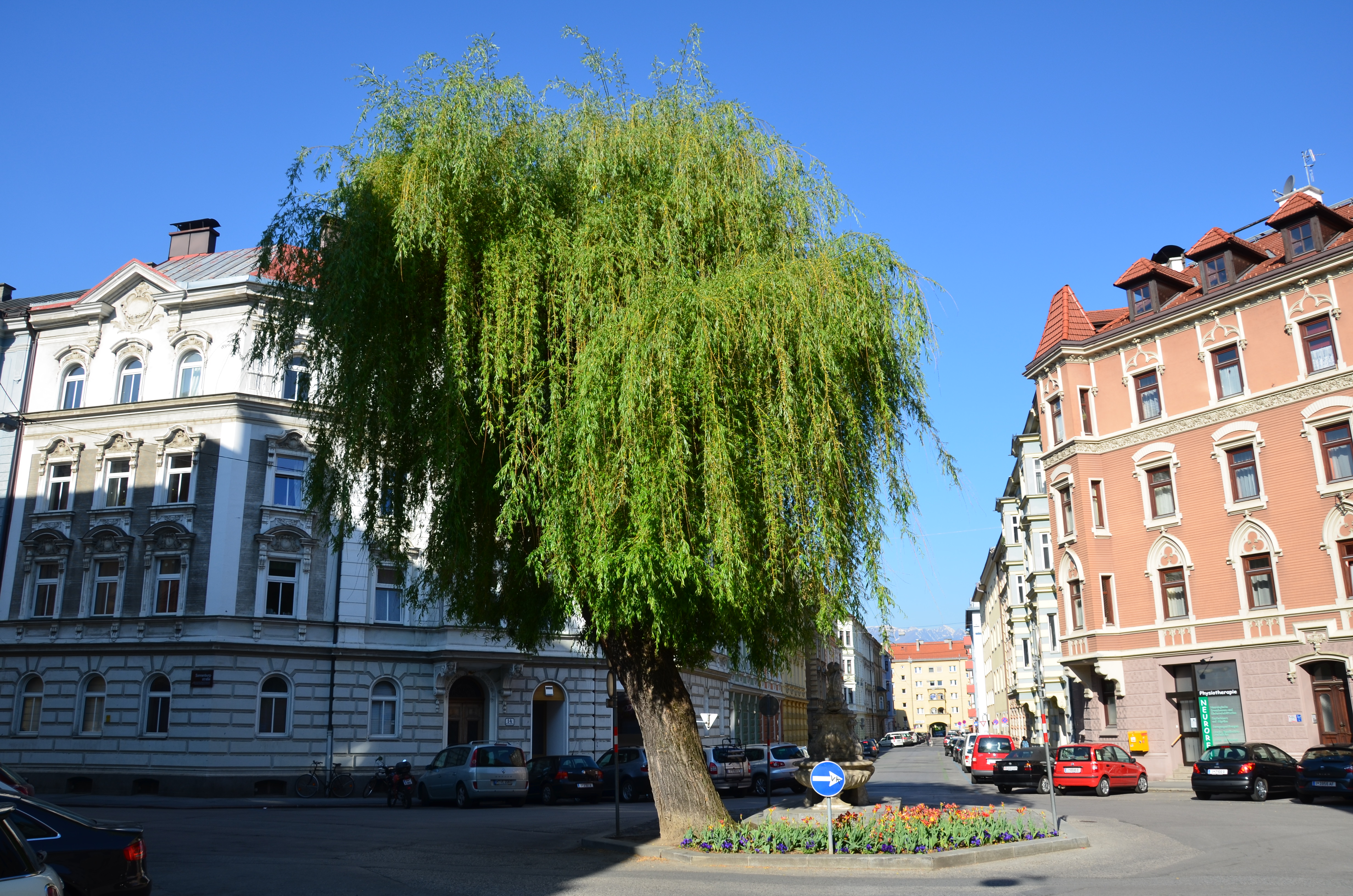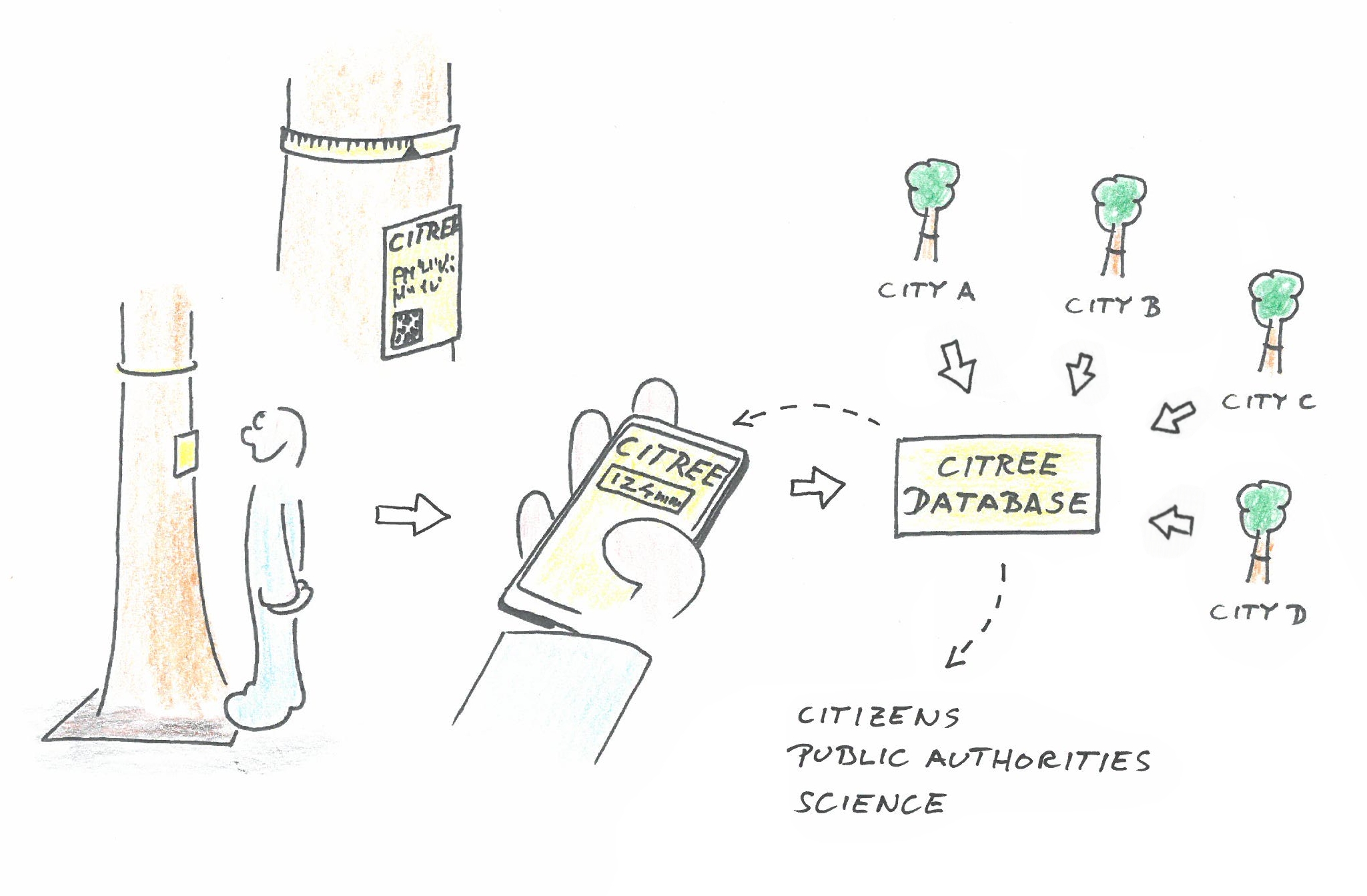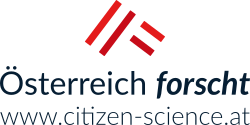Homegrown
“Homegrown - There is nothing like a homegarden”
Project description
With their variety of plant species and the experience of the gardeners, rural home gardens constitute an integral component of the cultivated landscape in the Lienz district, East Tyrol. Together with pupils of the BG/BRG Lienz school (and biology, math/physics and English teachers), scientists are investigating rural home gardens, including stocks of plant species and the use of plants. These results will be compared with those taken 20 years ago from the same gardens and will help to identify changes in gardens and their cultivation. These diachronic perspectives allow a precise and empirically established overview of changes in rural home gardens in the countryside of an industrial and services-focused state, in the context of demographic and economic changes and the search for a new identity.
To gain a better understanding of the local perception of the significance of rural home gardens, observations from gardeners and their neighbours concerning ecosystem services in gardens and their significance will also be recorded.
The project will also investigate cultivation techniques that adapt to extreme weather or ensure sustainable growth. It will also find out why people grow gardens and which values and approaches guide their behaviour or actions in gardens.
As part of an additional citizen science module, the local population in East Tyrol and Oberen Drautal will be combined. The module appeals to gardeners who are interested in taking surveys in their gardens, according to methodological direction and by monitoring their gardens, so as to demonstrate the material and immaterial ecosystem services in gardens. These gardeners and the cooperating young people will be trained in simple quantitative and qualitative survey methods for this purpose. This will take into account the opportunities that depend on the education and experience of each individual participant.
The starting point for developing analogue survey tools for the researching gardeners is a universal T-card office planner (49 x 47.3 cm, 7 panels, light grey) with 20 slots and 7 columns. The card slot system provides a weekday structure (Monday to Sunday), an hourly structure (6 a.m. to 10 p.m.) and six variables for recording ecosystem services.
On the universal T-card planner, the gardeners use the provided weekday and time scales with differently coloured slots to record the following specific information in writing about the individual ecosystem services during the recording period:
- Provisioning services, such as the yield of vegetables and fruits from the home garden (name of the person harvesting, time and duration, name of the harvested fruits and vegetables, the amount harvested and its respective use).
- Regulating services, such as birds, insects or pests in the home garden (name of the observing person, time and duration, name and number of birds, insects or pests observed).
- Cultural services, such as cultivation techniques in the home garden (name of the person cultivating, time and duration, tools used, etc.) or activities in the home garden when used as a place for relaxation and leisure.
The time spent in the garden will be recorded with a simple stopwatch. Some plant materials will be weighed out with simple, easily available kitchen scales. The card slots will be placed somewhere protected from weather or positioned where they are in the gardener’s view. This location will be decided on site with the gardener.
The duration of collections using the card slot system will be calculated at at least a week and will then be passed on to another gardener. Seven card slot systems will be prepared. The recordings ran from 1 August to 31 August 2018.
Through the participation of citizen scientists, a continuous observation and record of local perception (emic viewpoint) of the ecosystem services of home gardens is guaranteed. The methods were proposed by a gardener from the region being researched and were discussed/considered together with other gardeners from the area. The citizen scientists were actively involved in data acquisition and collection, data analysis and interpretation and the publication of results in the project report, scientific journals and conferences and in local media (dolomitenstadt.at). The collected data was continuously documented and stored by scientific guardians. Interim and final results were returned to the participating gardeners as part of the “give back” culture in the citizen science final event (“Gartenfest”).
Project collaborators
Heidemarie Pirker
Brigitte Vogl-Lukasser
Partners
BG/BRG Lienz (Renate Hölzl, Arno Oberegger, Hansjörg Schönfelder and the pupils of class 6b (from academic year 2018/2019: 7b).
Marie-Luise Wohlmuth (workshops on soil biology)
Ramona Walder (photography)
Peter Werlberger (video)
Gerhard Pirkner (dolomitenstadt.at)
Germain Weber & Team (Faculty of Psychology, University of Vienna)
Christian Ragger (REVITAL - Integrative Naturraumplanung GmbH)

Image gallery
(Click on an image to enlarge)
https://www.citizen-science.at/en/blog/tag/land%20use?start=30#sigProId537f10b2da
This project fulfilled version 1.1 of the quality criteria for citizen science projects on Österreich forscht.
Tea Bag Index
Can tea help us understand climate change? Yes, but we need your help! We would like you to become our research partner and take part in one of the largest experiments on soil decomposition processes at the moment!
Citree
With the Citizen Science Project "CITREE" a crowdsourcing instrument for monitoring the growth of urban trees, will be developed and used. It builds on the "Sparkling Science" project "Woody Woodpecker", which deals with the growth, structure and function of wood.
Urban trees fulfill a variety of functions, such as improving the microclimate and air, noise protection or the design of public spaces. Monitoring of urban trees is important because climate change leads to an intensification of stress on the trees. In cities, trees are exposed to extreme heat and drought and are additionally affected by other stress factors such as pollutant emissions, limited root space, salt stress or pest infestation. Therefore, trees in cities are "living laboratories" that allow analyses of stress mechanisms and estimates of future developments. CITREE is intended to provide a tool for monitoring urban trees and thus create a bridge between citizens and their trees: On the one hand citizens can participate in the monitoring process, on the other hand they can see and learn how their trees grow. This feedback will also be used to present the work of public institutions (e.g. city nurseries) and will enable school projects on urban trees and urban ecology. Three schools in Vienna and Innsbruck are currently involved in researching as part of the Stadt-Baum-Boden project.

(c) CITREE
CITREE is based on easy to install and cheap band-dendrometers, with which the trunk circumference and thus the growth can be measured. Dendrometers installed on urban trees are read by citizens who have access to the CITREE database via QR code and smartphone. The CITREE database collects the growth data of all trees and makes it available to involved citizens, the public, public institutions and researchers.

The main work packages of the project are:
- Selection/modification of suitable dendrometers
- Development of an installation system
- Development of the CITREE database
- Test and optimization of the developed systems under urban conditions
- Data analysis and
- Installation of the systems in Austrian cities.
The project will be carried out at the Institute of Botany, University of Innsbruck and will benefit from the long experience in the field of science communication of the PI (Stefan Mayr) and his staff. The development of the CITREE database is carried out in cooperation with the University of Ghent and the company Phyto-IT, Belgium. A cooperation with the School of Education, University of Innsbruck serves the didactical optimization. For the installation in Austrian cities, city nurseries and researchers will be contacted to collect a first broader data set on the growth of urban trees. In the long term, CITREE is to be further developed into CITREE-EU, thus enabling a monitoring network in European cities.
Tasks and roles in the project:
- Citizen Scientists:enter the numbers read from the dendrometer and receive a graphical display of the calculated tree diameter including the previous history.
- Research assistants: handle special cases (resetting dendrometer, removing obvious mismeasurements...), tracking patterns of growth, vandalism, etc.
- IT-assistant: Creating new trees in the database and on the homepage
If you have any questions about the project, or are interested in participating in the project, please write to This email address is being protected from spambots. You need JavaScript enabled to view it..
This project fulfils version 1.1 of the quality criteria for citizen science projects on Österreich forscht.
Nature conservation monitoring
We take care of our meadows and alpine pastures!
For more than a decade, hundreds of farmers have been saying "We look at our meadows and alpine pastures!".
The regular observations of the more than 700 participants impressively show that on more than 80 % of the monitoring plots in extensive grassland the number of individuals of the species observed has remained the same or even increased.
By observing the animals and plants every year, the perspective with which the farmers perceive their meadow changes and a process of more conscious action is set in motion.
Background
In monitoring extensive grassland, participants look at which management practices promote or inhibit the occurrence of individual plant and animal species.
The Austria-wide observations of plant and animal diversity provide new insights into the benefits of management in extensive grassland. (By extensive grassland we mean species-rich meadows that are mowed a maximum of two to three times a year or not at all or only slightly fertilized and gentle grazing.)
The species-rich grassland has been displaced by a frightening 90% since the 1960s due to structural changes in agriculture and land use change! The last occurrences of colorful flower meadows are therefore landscapes with a high number of species and important retreat areas for plant and animal diversity in Austria!
By regularly observing the development of indicator species, the meaning of different agri-environmental measures (ÖPUL) such as contractual nature conservation, organic farming (BIO) and environmentally friendly and biodiversity-promoting management (UBB) is made understandable and it is observed at farm level whether agricultural subsidies also have an effect on the area.
The nature conservation monitoring will show which type of management is well suited for the type of meadow under consideration and therefore leads to safe stocks of the observed indicator species. As a result, management requirements can be better evaluated on the basis of feedback from farmers and funding can be awarded in a targeted manner.
Participate
All farmers with (potentially) extensive meadows and pastures who take part in the agri-environmental measure ÖPUL “Organic farming (BIO)” or “Environmentally friendly and biodiversity-promoting management (UBB)” can take part. At the beginning there is an enrollment by an ecologist. It is agreed which indicator species are to be observed and counted annually. The participants then document the indicator species and the management of the meadow every year and enter the data on the online platform www.naturschutzmonitoring.at.
Project duration: until 2029
Information on participation:
- Hotline: +43 677 643 130 71
- Mail: This email address is being protected from spambots. You need JavaScript enabled to view it.
Quotations of participants
„This year I deliberately left a patch of rambling bellflowers so that they could sow seeds. Now I am already curious whether they will be more next year!“
„This project is going places. My son wanted to reforest our rough pasture some time ago, because the fodder is worth nothing and mowing takes a lot of time. Since your expert showed him that there are a lot of rare animals and plants living in it, he hasn't said anything about it. He even helps me counting now.“
„What makes me particularly happy is that for once it is not about control or money, but about seeing and appreciating the beautiful aspects of our work.“
You can also follow the ÖKL on Facebook, Instagram and YouTube for further information.
Project management
Barbara Steurer
Österreichisches Kuratorium für Landtechnik und Landentwicklung (ÖKL)
Gußhausstraße 6
1040 Wien, Austria
www.oekl.at
https://www.citizen-science.at/en/blog/tag/land%20use?start=30#sigProIddb6afa55fd
This project fulfils version 1.1 of the quality criteria for citizen science projects on Österreich forscht.
Fire Database
Since 2008, the Institute of Silviculture at BOKU University, Vienna, has been analyzing the occurrence, distribution, causes and characteristics of forest fires in Austria as part of various research projects. The data series spans several decades and includes around 8000 fires, of which around 7000 are forest fires. The last 20 years are the best documented. The Institute of Silviculture has created the web GIS platform “Fire Database”, which is freely accessible and allows interested parties to query forest fire events and generate statistics or graphics.
Most forest fires are recorded in spring and summer. Parts of Carinthia, Tyrol, Styria and southern Lower Austria are particularly frequently affected by forest fires. In most cases, the cause of the fire is human behavior, such as an out-of-control fire, a carelessly discarded cigarette or hot ash. In the summer months, lightning induced fires also play a significant role. Several forest fires have been investigated as case studies to analyze the fire behavior, the mortality of the affected trees and the regeneration of forest stands.
Anyone who would like to actively participate as a citizen scientist in forest fire research can do so via the mobile app spotFIRE, which was launched in 2024. spotFIRE is available for Android, iOS and as a web version and enables the on-site documentation of wildfires. In addition, spotFIRE can be used to record the forest structure and fuel quantities. With their participation, citizen scientists support the continuation of the forest fire database and enable scientists to make better estimates of forest fire behavior in Austria.
Podcast episode
In June 2023, project coordinator Mortimer Müller was guest on the Österreich forscht podcast Wissen macht Leute - you can listen to the episode here (in German).
Citizen Science Seminar
In 2021, poject coordinator Harald Vacik held a lecture about "Fire Database" as part of the lecture series "Citizen Science Seminar" at BOKU University: "Challenges of forest fire research in the alpine region" (in German).
Links
- spotFIRE App
- Forest Fire Database Austria
- Forest Fire blog Austria
- Forest fire research at BOKU
- European Forest Fire Information System (EFFIS)
-
 Cloud of smoke from the forest fire near Neunkirchen, Lower Austria, on 1st August 2013 Cloud of smoke from the forest fire near Neunkirchen, Lower Austria, on 1st August 2013
Cloud of smoke from the forest fire near Neunkirchen, Lower Austria, on 1st August 2013 Cloud of smoke from the forest fire near Neunkirchen, Lower Austria, on 1st August 2013 -
 Forest fire near Neunkirchen, Lower Austria, on 1st August 2013 Forest fire near Neunkirchen, Lower Austria, on 1st August 2013
Forest fire near Neunkirchen, Lower Austria, on 1st August 2013 Forest fire near Neunkirchen, Lower Austria, on 1st August 2013 -
 Damage caused by the forest fire near Neunkirchen (1) Damage caused by the forest fire near Neunkirchen (1)
Damage caused by the forest fire near Neunkirchen (1) Damage caused by the forest fire near Neunkirchen (1) -
 Damage caused by the forest fire near Neunkirchen (2) Damage caused by the forest fire near Neunkirchen (2)
Damage caused by the forest fire near Neunkirchen (2) Damage caused by the forest fire near Neunkirchen (2) -
 Damage caused by the forest fire near Neunkirchen (3) Damage caused by the forest fire near Neunkirchen (3)
Damage caused by the forest fire near Neunkirchen (3) Damage caused by the forest fire near Neunkirchen (3) -
 Damage caused by the forest fire near Neunkirchen (4) Damage caused by the forest fire near Neunkirchen (4)
Damage caused by the forest fire near Neunkirchen (4) Damage caused by the forest fire near Neunkirchen (4) -
 Number of forest fires 2003-2024 (reported via Fire-Database) Number of forest fires 2003-2024 (reported via Fire-Database)
Number of forest fires 2003-2024 (reported via Fire-Database) Number of forest fires 2003-2024 (reported via Fire-Database) -
 Distribution of forest fires over the year (totals from 2003-2024; reported via Fire-Database) Distribution of forest fires over the year (totals from 2003-2024; reported via Fire-Database)
Distribution of forest fires over the year (totals from 2003-2024; reported via Fire-Database) Distribution of forest fires over the year (totals from 2003-2024; reported via Fire-Database)
https://www.citizen-science.at/en/blog/tag/land%20use?start=30#sigProId9148f66075
This project fulfils version 1.1 of the quality criteria for citizen science projects on Österreich forscht.
StadtWildTiere Vienna ("UrbanWildAnimals")
Have you ever seen a sparrow hawk in Vienna? Did a badger cross your path on your way home at night? Or do you have swallow nests at your housing complex? We are interested in your observations in Austrian cities!
The project works specifically in urban areas. With the help of Austrian city dwellers we want to get an overview of the distribution and way of life of mammals and birds in urban areas. We hope to obtain a broad data base based on sighting reports in order to better assess the distribution of diverse birds and other wildlife in Austria's cities.
Research platform
On the internet platform "www.stadtwildtiere.at" you can report your observations and view other observations. Find out about current sightings in your area and obtain further information on the biology of wild animals and their distribution in the city. You can also call up assistance in cases of conflict and for finding helpless or injured wild animals. We will also be happy to assist you with questions regarding your observation. The platform is so far unique in Austria: specialised in the occurrence of birds and wildlife in urban habitats and linked to scientific research.
Where pathways cross …
Understanding the city as an important habitat for humans and animals and creating a good coexistence - this is what we want to make possible with the establishment of the project "StadtWildTiere " and our research platform. Our goal is also to be able to provide adequate management proposals in the event of conflict or damage.
Become part of our research project!
In the Science Interview with Eva with Richard Zink and Theresa Walter, you can get a look behind the scenes of the project. (in German)
You can also find StadtWildTiere on Facebook.
Podcast episode
For the Österreich forscht podcast's first birthday, Peter Kovar, a dedicated Citizen Scientist in the project, gave interesting insights into the project in March 2023 - tune in! In October 2025, Fabienne Selinger from StadtWildTiere was a guest on our podcast. In our episode, you can learn everything about the most sensational discoveries or the focus project on the prey of domestic cats.(Both in German)
Citizen Science Seminar
In 2022, poject coordinator Richard Zink held a lecture about StadtWildTiere and Wilde Nachbarn (in German) as part of the lecture series "Citizen Science Seminar" at the University of Natural Resources and Life Sciences Vienna (BOKU).
https://www.citizen-science.at/en/blog/tag/land%20use?start=30#sigProIdf8f8f5a246
This project fulfils version 1.1 of the quality criteria for citizen science projects on Österreich forscht.
Roadkill
In this citizen science project of the University of Natural Resources and Life Sciences, Vienna, we would like to create an overview of where animals are roadkilled and what reasons there might be for this.
In the Roadkill project, we would like to cooperate with you in many ways, because citizen science means for us an active cooperation between research and society, in which everyone can contribute expertise and is highly valued. The collaboration is on a voluntary basis and can therefore be freely designed.
You can find out in which ways you can participate in the Roadkill project in the section "Participate in research".


